Lever
What is a Lever
A lever is a simple machine consisting of a plank or a beam that can rotate freely about a fixed point. It is used for moving, lifting, or propelling objects.
Who Invented the Lever
Greek mathematician Archimedes was the first to develop lever principles in 260 B.C.
Parts of a Lever
A lever system consists of four parts – beam, fulcrum, load, and effort.
- Beam: A plank made out of wood or metal.
- Fulcrum: The pivot point about which the beam rests and moves freely. Since the beam can move freely, the fulcrum is also known as the lever’s turning point.
- Load: The object on the beam that the lever tries to move or lift.
- Effort: The force applied to lift or move the object, resulting in work.
How Does a Lever Work
A lever works by reducing the force applied to move a heavy object. A beam is placed on a fulcrum, and an object is positioned on the beam. A force is applied somewhere on the beam. The beam pivots around the fulcrum and lifts the object. The relative positions of the fulcrum and the load are adjusted to minimize the applied force.
The beam rotates about the pivot point. A torque is necessary to rotate the beam and lift the object. The basic principle is that the applied torque manifests at the load.
Mechanical Advantage of a Lever
The mechanical advantage measures how much a lever can multiply the force applied to lift or move the load. The relative positions of the fulcrum, load, and effort determine the mechanical advantage value. It is mathematically given by the ratio of the load and effort and proven by the Greek mathematician and physicist Archimedes.
Mechanical Advantage = Load/Effort
This formula can also be written as,
IMA = Effort arm/ Load arm
Where,
IMA = Ideal mechanical advantage
Effort arm = Distance from effort to fulcrum
Load arm = Distance from load to fulcrum
Suppose the distance from the effort to the fulcrum is greater than that from the load. In that case, the mechanical advantage is greater than one. In other words, the further the effort is from the fulcrum, the easier it is to displace the load since a small effort is required. Therefore, placing the fulcrum close to the load is advantageous to minimize the effort. Levers are designed such that their mechanical advantage is greater than one, which makes them ideal simple machines.
Types of Levers
Based on the relative position of the fulcrum, load, and effort, there are three different types of a lever. They are known as first, second, and third class.
1. First Class
Also known as Class 1 or 1st class lever, the load is at one end of the beam, and the effort is at the other end. The fulcrum is between the load and effort. Depending upon the position of the fulcrum, the effort can be high or low. If the fulcrum is closer to the load than the effort, the effort is low. The effort is high if the fulcrum is closer to the effort than the load.
Examples – Car jack, crowbar, seesaw, boat oar, scissors, pliers, claw hammer, bolt cutter, and wire stripper
2. Second Class
Also known as Class 2 or 2nd class lever, the fulcrum is at one end of the beam, and the effort is at the other end. The load is located between the fulcrum and effort. The position of the load affects the effort. If the load is closer to the fulcrum than the effort, the effort is low. The effort is high if the load is closer to the effort than the fulcrum.
Examples – Bottle opener, wheelbarrow, nutcracker, brake pedal, and conventional door
3. Third Class
Also known as Class 3 or 3rd class lever, the fulcrum is at one end of the beam, and the load is at the other end. The effort is located between the fulcrum and load. The effort depends upon its position. The effort is high if it is closer to the load than the fulcrum. The effort is high if it is closer to the fulcrum than the load.
Examples – Garden shovel, rake, hockey stick, tweezers, tongs, fishing rod, and hammer
Applications and Uses of Lever
Because of their high mechanical advantage, levers are used in many applications in everyday life. Here are some of them.
- Lifting and moving objects using a wheelbarrow
- Removing nails using a claw hammer
- Lifting small particles using a tweezer
- Cutting or separating materials using scissors
- Stripping wires using pliers or wire cutter
Besides, many parts of the human body function like a lever. The joints behave like a fulcrum, and the bones act as a beam. The following image shows some examples of levers used in daily life.
FAQs
Ans. The human forearm is a third class lever. The elbow joint functions as the fulcrum, the muscles function as the effort, the forearm functions as the beam, and the weight of your forearm is the load.
Ans. A trebuchet catapult is a first class lever. The beam pivots about a frame. The payload is placed at one end, and the counterweight is at the other.
Ans. The law or principle of lever states that a lever will be balanced when the weight on one side of the fulcrum multiplied by its arm is equal to the weight on the opposite side multiplied by its arm.
-
References
Article was last reviewed on Wednesday, March 9, 2022

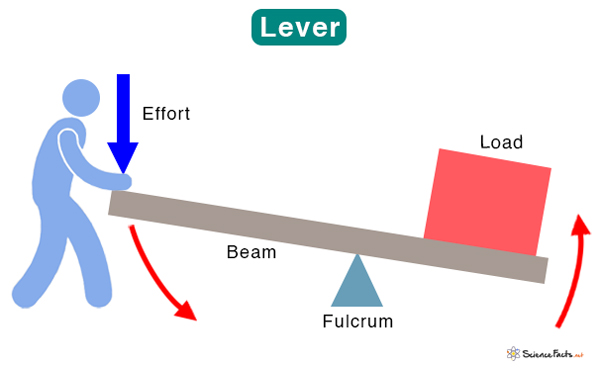
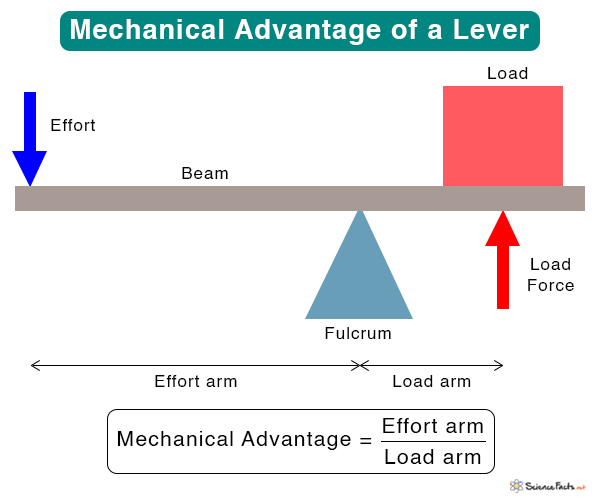
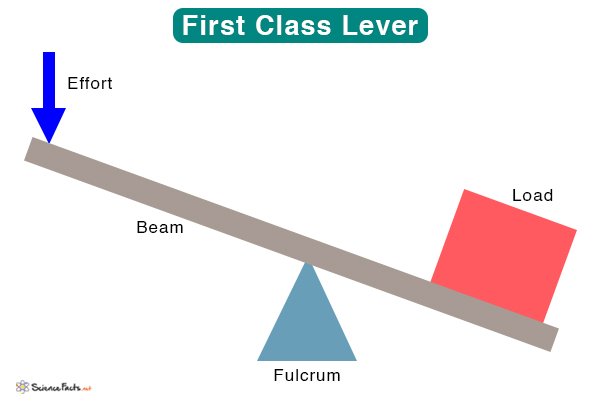
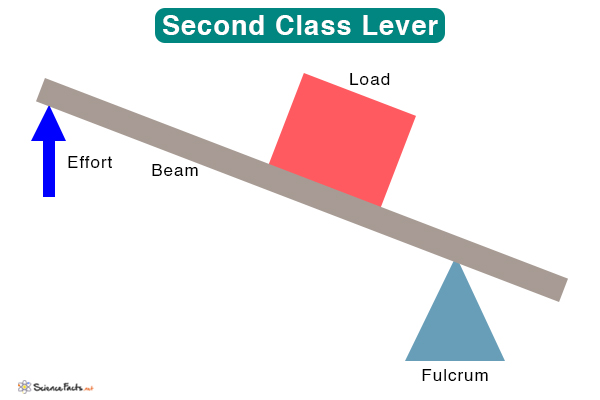
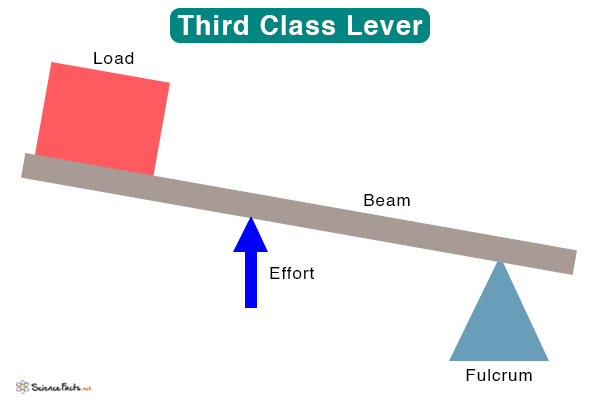








Amazing stuff! Gives me better information for science essays.
Good